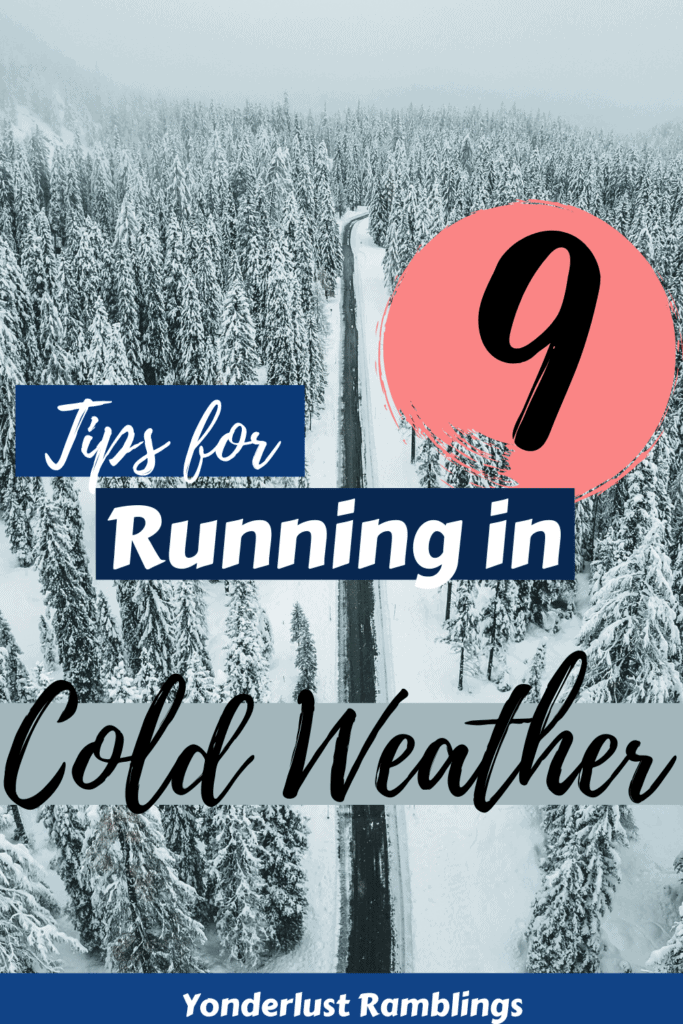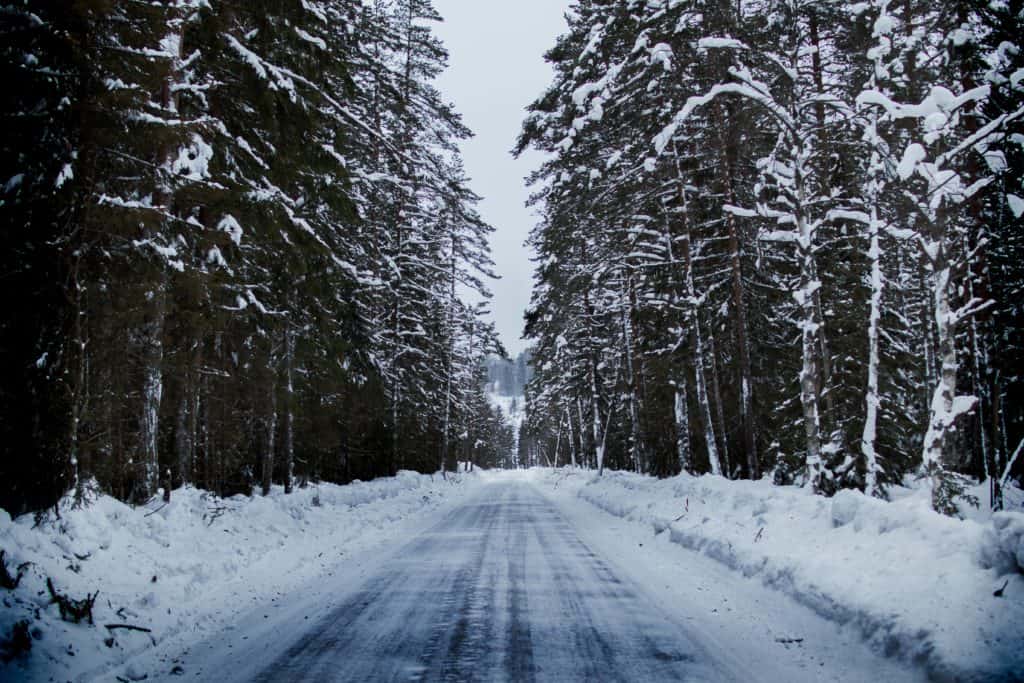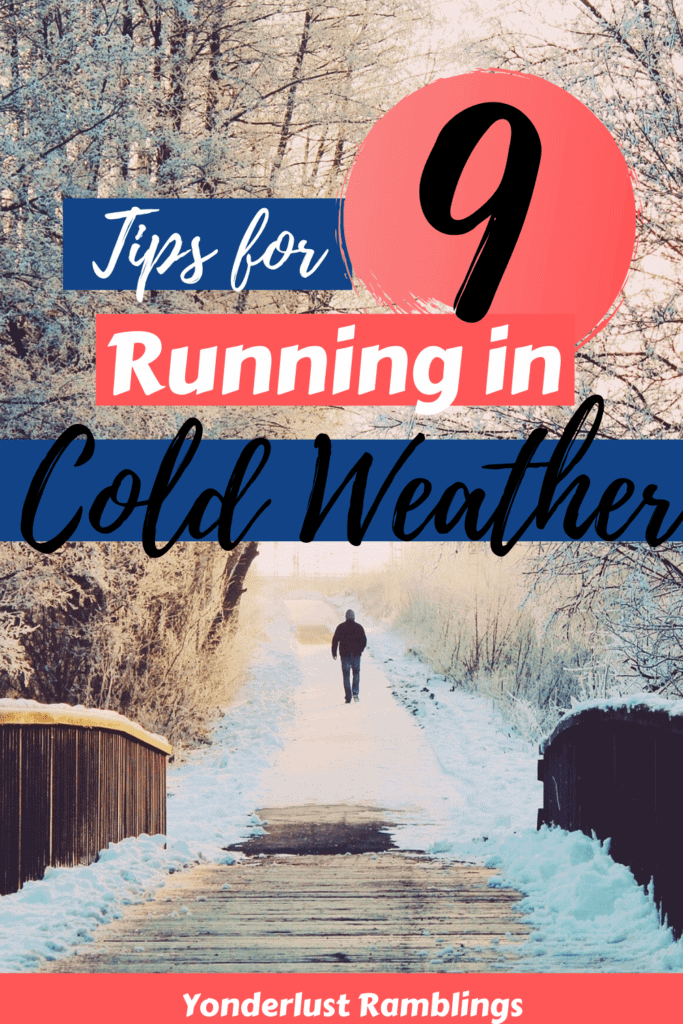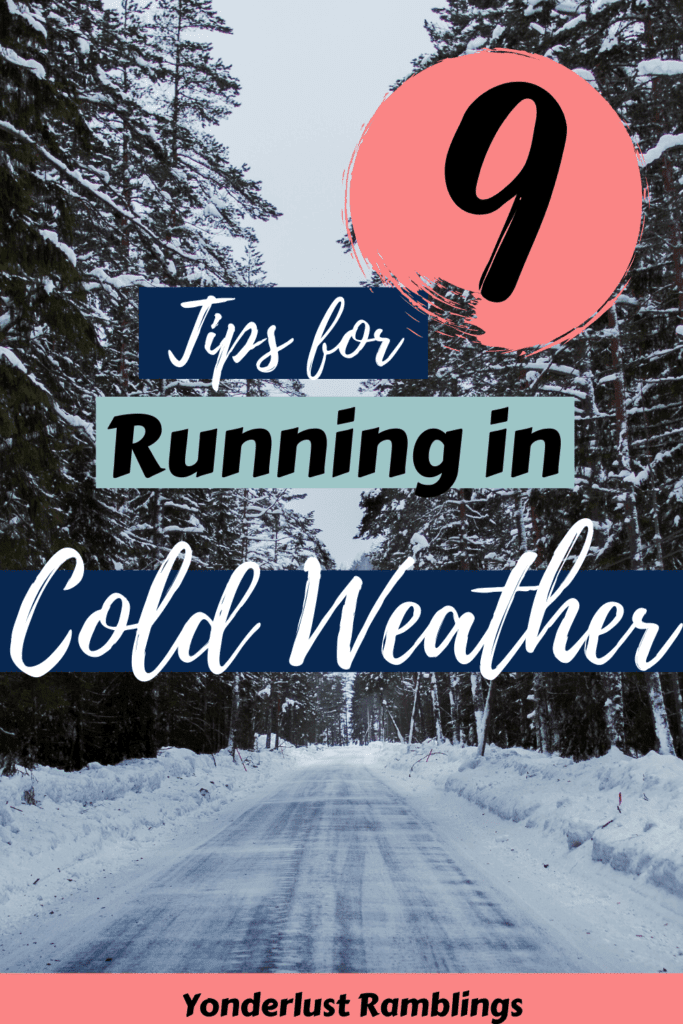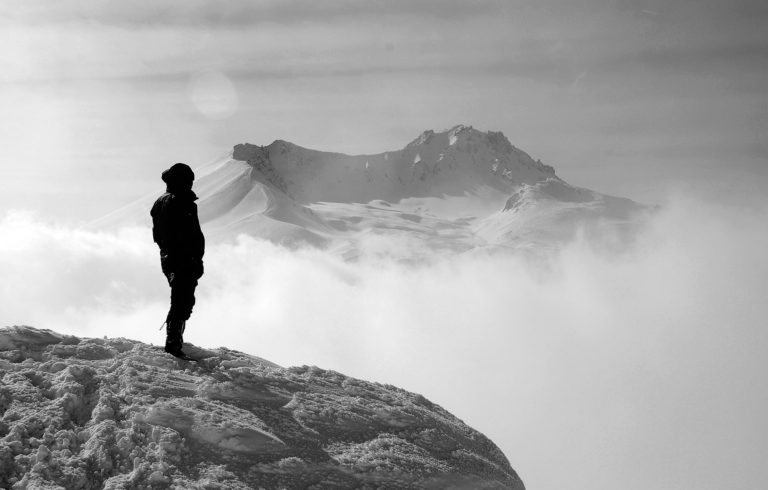9 Simple and Effective Tips for Running in Cold Weather
No more being defeated by the season! Cold weather is no reason to stop running outdoors! In fact, with the right preparation, cold weather running might just become your favorite! Don’t miss out on a minute of running – brave the winter with these 9 tips for running in cold weather!
Disclosure: Below are some affiliate links-these are all products I highly recommend. I won’t make any recommendations on this page that I haven’t tested or personally used! Enjoy this guide to running in cold weather!
Table of Contents
9 Tips for Running in Cold Weather
These 9 tips for running in cold weather include managing environmental factors, developing the right mindset and motivation, and listening to your body, all necessary to ensure a safe, successful, beneficial, cold weather running experience!
9 Tips for Running in Cold Weather:
- Layer with the Right Fabrics
- Protect from the Wind
- Hydrate
- Run at Certain Times
- Use the Treadmill
- Book a Winter “Runcation”
- Find a Running Partner
- Remind Yourself It’s Not Summer Heat
- Reward Yourself with a Hot Post Run Treat
#1: Layer with the Right Fabrics
The first rule of thumb for cold weather running is to layer with the right fabrics. Before getting into what to wear, let’s talk about what NOT to wear. Avoid cotton at all costs! Not only is cotton extremely ineffective at keeping you comfortable, it can be downright dangerous for running in cold weather.
Instead of repelling moisture, cotton holds onto it. All that lingering moisture rests right on top of your skin, and in frigid temperatures, that moisture will become cold. In freezing temperatures, that can become dangerous. It is vital to keep yourself from a moisture build up situation when running in cold weather.
In order to achieve this, you MUST wear the right fabrics. Fabrics that are insulating to keep you warm, breathable, to allow moisture to escape and not build up under your layers, and moisture wicking, to keep that moisture from prolonged contact with your skin.
My personal experiences have always led me to rely on wool. That is because wool is not only warm and insulating, but it is extremely efficient at moisture wicking. It can simultaneously create a warm air cushion under your outer layer, while preventing dangerous moisture build up on skin. Plus, wool is quick drying and odor resistant.
Once you know the right fabric to run in the cold with, make sure you layer properly. You only solve half the problem if you obtain the right layers, but do not know the proper way to utilize them. When it comes to running in cold weather, you want to employ the 3 layer method.
Your first layer is considered your base layer. This is the layer that will be in direct contact with your skin. It should be lightweight, but possess all the important factors listed above: breathability, moisture wicking, quick drying, insulating, and odor resistant. An ultralightweight or lightweight wool base layer is most effective for this job.
Your second layer is considered your mid layer. It should continue the trend set by the base layer, and continue the job of insulating while being breathable and moisture wicking. Wool is still the way to go. I recommend a mid layer that has a hood and pockets, as often, in the case of cooperative weather, you may find yourself shedding your third and outer layer (to be discussed next), and able to run in your mid layer.
In dicey winter weather, your third and outer layer becomes the most important. The third and final layer is referred to as an outer shell layer. This is your defense against the external elements, like wind, snow, and rain. Outer shell layers should be treated with waterproof/water resistant components, and windproof/wind resistant capabilities. Your outer shell has to perform these jobs, while still continuing the work being done underneath by the base and mid layers. That means it still has to be insulating and breathable.
There are 2 trains of thoughts with outer shells: hard and soft shells. Hard shells have traditionally been more hardcore, often being fully waterproof and windproof. But traditionally, they have also been bulkier and less responsive, which aren’t always the most conducive to a high activity venture like running. It is important to defend against the elements, but it is important to wear fabrics that allow movement and do not restrict you.
Soft shells are often more “flexible” and responsive, and potentially less bulky. But many are less amped in defenses, often with water-resistant and wind resistant capabilities .
So which do I use, a soft shell or hard shell outer layer? Here’s my answer: I own both. I definitely run in one more than the other. I prefer my soft shell water and wind resistant outer shell layer to run in, because it feels more responsive to movement and activity.
And here’s the other truth. I don’t often run in my hard shell, fully waterproof and windproof outer shell, because I rarely see the need to force a run to happen in elements that include full rain, ice, or snow conditions. Those are the kind of situations that are worth adjusting my training schedule over. I’m not going to voluntarily run in a blizzard, I’ll push my run back a day.
On a side note, I do hike in my waterproof and windproof outer shell, because my activity level is lower when hiking, and hiking conditions at higher elevations or mountain conditions in winter pose more of a risk for encountering the conditions that necessitate a waterproof and windproof outer shell.
Consider your expected conditions when deciding what type of outer shell to buy. If you live in a region that gets very cold, but has a lower risk of blizzard like winter conditions (like the area of Texas that I live in), than you could be comfortable with a soft shell layer that is water and wind resistant.
Are you going to be doing a lot of trail running at higher elevations? Then consider the need to defend against more substantial environmental elements. If you are planning to take on some extreme adventure runs, like these top 21 most extreme adventure races, that expose you to all forms of environmental challenges, perhaps consider investing in both and using as necessary.
So what do I personally use as my outer shell to run in?
If you are running in cold weather, but there are no substantial wind gusts, rain, or snow, it is suitable to shed your outer layer and run in a base and mid layer combo. The outer layer is there to protect against the elements.
When it comes to layering for cold weather running, don’t forget about socks! Socks are critically important, because there nothing worse than trying to run on feet that are cold or blistered. If you grab a pair of these awesome moisture wicking wool socks, you’re guaranteed to encounter no moisture build up or blisters!
#2: Protect from the Wind
Wind in the summer is not as great a threat as wind in the winter. It is important to protect yourself from frigid gusts while running in cold weather. I discussed above the need for sufficient outer layers that defend against wind, but it is not just about the jacket. Make sure that when running in extreme winter temperatures, you take care of your extremities too. That means invest in the right gear to protect your head and hands!
Ears can become very sensitive to cold winds. Your comfort and safety level will be greatly enhanced with the right barrier for your ears against the cold.
I discovered the genius behind GORE products, when I got into road cycling as a beginner. That is because GORE products are renowned among cyclists, who encounter their fair share of gusty conditions. Specialized GORE products are unrivaled at wind protection.
If you want to take your head covering one step further, invest in a wool beanie to go over your headband, to add an additional insulating layer of warmth.
There may also come a time when you’ll need to protect more than just your head. There is one functional item of cold weather running gear that can ad a layer of protection for your neck, face, and head, and this product is a Buff. One of my most ingenious and utilized pieces of running gear, a Buff can be a true lifesaver in cold weather, and it is incredibly multi-functional.
You can wear it around your neck to keep that area of skin protected, you can also pull it up over your mouth and nose to use as a type of baklava, and finally, you can pull it up over your head and ears for an extra layer of protection.
Don’t forget about your hands! In extreme winter running conditions, you’ll want a pair of insulating, yet breathable, gloves, and I would go ahead and invest in a pair that are touch screen enabled.
#3: Hydrate
This may seem a more obvious tip for summer running in the heat, but it is just as important, though often overlooked, in regards to cold weather running. Your body will still sweat when you are active in the cold weather, and just because it is not as noticeable does not mean you can neglect proper hydration for running in cold weather.
Proper hydration means not just gorging on water 10 minutes before a run, it means consistent and daily water hydration. Yes, you should have plenty to drink before a big run, but be consistent in your water intake each day. And be sure to hydrate and replenish your fluids following a cold weather run.
To stay properly hydrated during your run, have a hydration system in place. This can look several different ways, depending on your preference.
For me, it often looks like choosing a course that either has water facilities (like a water fountain in a park) available, or finding a loop course that passes by a designated spot where I have water available (like my own home or the parking lot where I parked my car). It is also possible to use a hydration vest system like this Osprey favorite.
#4: Run at Certain Times
In the summer, it is advised to run early in the morning or at dusk, when the sun is not at full strength. To make cold weather running in frigid temperatures more bearable and comfortable, this advice is often flip flopped.
Consider running in the afternoon, when the sun is at its full strength and presence. Early morning and evening temperatures will be lower in the winter. It is not to say that you can’t run in the early morning or evening in winter, but if you do, make sure you layer properly and are ready to combat lower temperatures.
#5: Use the Treadmill
If you find you need to, use a treadmill if you have access to one. For those truly, miserably cold days, or perhaps winter conditions like blizzards or ice that make running outside unsafe.
#6: Book a Winter Runcation
One of the best forms of motivation for maintaining cold weather running is to know what your end goal is. Knowing that you have a seasonal race to look forward to can help push you past those mental road blocks that will inevitably pop up in the middle of that freezing cold run. Running in winter conditions and cold temperatures is a formidable opponent, so make sure that you have an inventory of motivations ready to go!
Looking for some extreme races and adventure runs? Here’s the top 21 from around the globe!
CHECK OUT:
Top National Park Marathons and Half Marathons
25 Best Half Marathons in the U.S.
Top 29 Best Marathons in the U.S.
30 Best Trail Races in the U.S.
The 20 Best Half Marathons in Texas
#7: Find a Running Partner
Having an accountability partner makes running in cold weather more intentional. It is one more form of motivational strategy. Having a running partner to talk with and run with can also help take your mind off of focusing on running in cold weather.
They can also be a useful resource as far as reminding you when to hydrate, when to take a break, and when to listen to your body, or when conditions may not be entirely safe to run outside. If you are training for a long distance race, having a running partner can also help you stick to your weekly training runs schedule.
CHECK OUT: 8 Ways to Find a Local Running Group
#8: Remind Yourself It’s Not Summer Heat!
In winter, runners cringe at cold and dream of summer. But guess what? In summer, runners cringe at heat and dream of cold. When the dread of running in cold weather starts to creep in, it helps to create a mindset that reminds you that, at that moment, it is worth appreciating that it is not the scorching, blistering heat of summer. Because you know you’ll be dreading that soon enough! Try to find what is worth appreciating about running in cold weather.
CHECK OUT: 10 Tips for Running in Hot Weather
#9: Reward Yourself with a Hot Post Run Treat
Again, just like looking forward to that winter race as your motivation, a more short term motivational strategy is to reward yourself with a hot, post run treat (after properly re-hydrating of course)! Hot cocoa, hot tea, a warm bath, etc., are a few of the incentives I use myself.
Running in cold weather is not easy, give yourself something to look forward to. And again, do not skip the important step of re-hydrating and replenishing first, before you treat yourself.
Now you are ready to confidently conquer running in cold weather! So what’s next?
If your cold weather running leads you to a winter race, prepare for all the other factors with my complete 16 week training plan!
Grab your FREE 16 Week Half Marathon Training Plan for Beginners
AND
FREE 16 Week Full Marathon Training Plan for Beginners
PIN for LATER!


